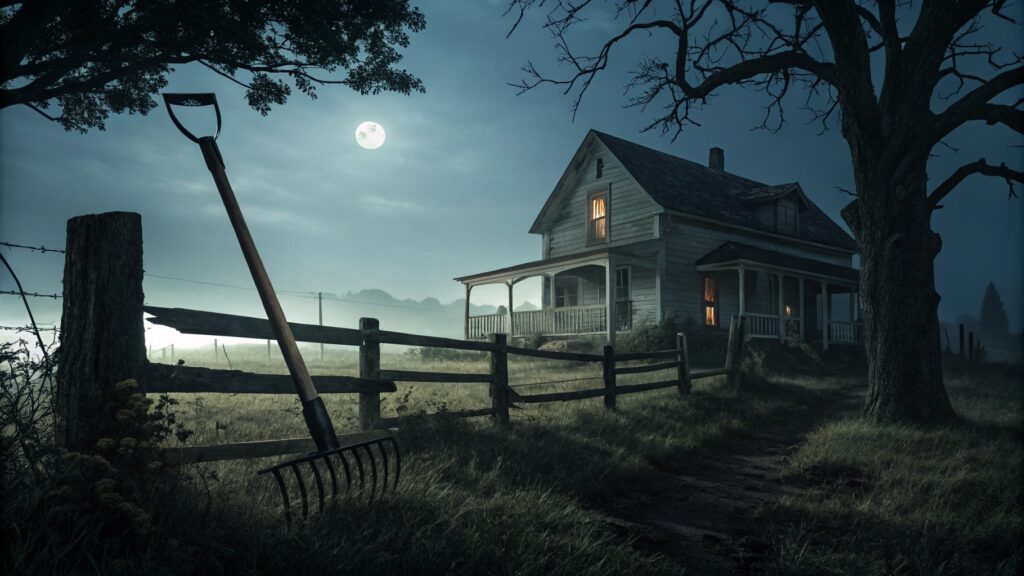Tobe Hooper was an American filmmaker best known for creating some of the scariest horror movies of all time. His most famous work, The Texas Chainsaw Massacre (1974), shocked audiences and forever changed horror cinema. Hooper’s use of low-budget techniques, realistic settings, and simple but terrifying props made his films unforgettable.
The Texas Chainsaw Massacre
Released in 1974, The Texas Chainsaw Massacre tells the story of a group of friends who fall victim to a family of cannibals in rural Texas. The main villain, Leatherface, became a horror icon with his chainsaw and frightening mask. The movie stood out because it felt so real and intense, even though it was filmed with a very small budget.
The Symbolism of Tools in the Movie
One of the most unique aspects of Hooper’s movie was his use of ordinary farm tools as weapons. Instead of creating supernatural monsters, he turned everyday items like chainsaws, hammers, hooks, and even rakes into symbols of fear. This gave the movie a disturbing realism because these tools are usually found in any rural household.
The Role of the Rake in the Texas Massacre
While the chainsaw was the main weapon, the rake has its own symbolic importance. The rake represents the rural lifestyle, farming, and the hard, harsh environment of Texas at the time. In horror culture, the rake stands for how something ordinary and harmless can become terrifying when placed in the hands of a killer. It was less about showing it in direct action and more about the atmosphere it created.
Tobe Hooper’s Creative Vision
Hooper’s genius was in using what was available. With a very limited budget, he made normal objects terrifying. His props were not just for shock but for realism. A rake in the setting of an old farm connects viewers to rural life, but in the movie, it also added to the feeling of danger. Hooper showed that fear could come from the simplest tools.
Cultural Impact of the Texas Massacre
When the film was released, it shocked and frightened audiences because it felt so believable. Many people had never seen a horror movie use such ordinary tools as weapons. This inspired later slasher films to use knives, machetes, and other simple items as killing devices. They are still strong today, with the rake and other farm tools remembered as part of the film’s haunting imagery.
Behind the Scenes of the Film
The filming of The Texas Chainsaw Massacre was difficult. The cast and crew worked in extreme heat with limited resources. Hooper used real farm locations, and many of the props, like the rake, were taken directly from rural households. This gave the movie its gritty, authentic look.
Why the Rake Matters in Horror Symbolism
The rake is important because it represents how horror can come from normal, everyday life. It shows the idea that any ordinary object can become a weapon of terror in the right (or wrong) hands. The rake’s presence connects viewers to rural fear — the kind of fear that comes from isolation and survival in harsh environments.
Conclusion
Tobe Hooper left a lasting influence on horror films by proving that you don’t need big budgets or supernatural monsters to scare people. The Texas Chainsaw Massacre is a perfect example of turning ordinary objects, including the rake, into icons of terror. His vision continues to inspire horror filmmakers and reminds audiences that fear often comes from the familiar.
FAQs
Did the rake actually appear as a weapon in The Texas Chainsaw Massacre?
The rake was not a main weapon like the chainsaw, but it was shown as part of the farm tools in the film’s environment, adding to the sense of realism and fear.
Why did Tobe Hooper use everyday farm tools in his films?
He wanted to create a realistic and disturbing setting where common objects became part of the horror, making the story feel closer to real life.
How did the Texas Massacre change horror movies forever?
It introduced realism, low-budget filmmaking, and the use of simple tools as symbols of terror, inspiring decades of slasher and survival horror films.
What makes the rake a symbolic part of rural horror stories?
The rake symbolizes rural life and shows how ordinary tools can turn deadly, highlighting the thin line between daily survival and brutal violence.

